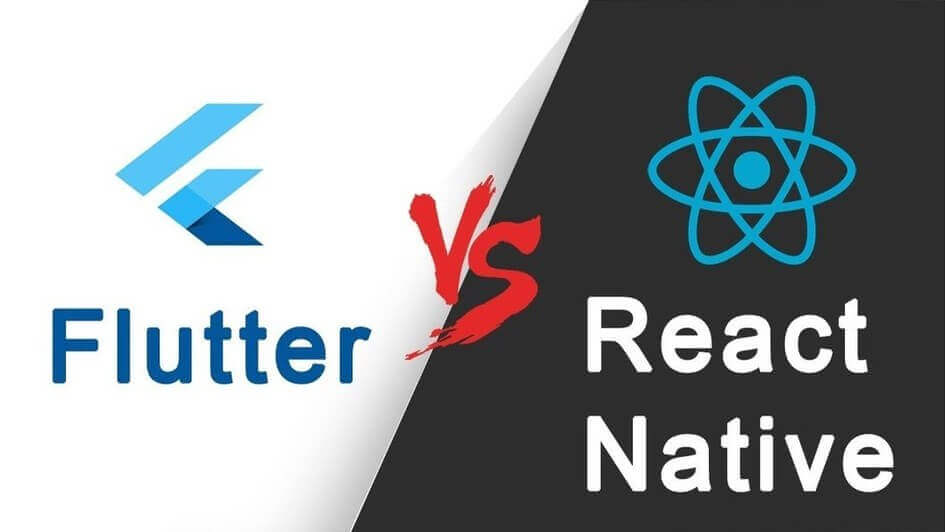
Businesses now need to be smarter than before. While deciding to develop a mobile app, one of the questions that come to mind is whether to build a native or cross-platform app. While a native app works better on a mobile device, developing a cross-platform application gives the opportunity to expand the user base. Flutter and React Native are two prominent frameworks for cross-platform app development.
How do you decide between Flutter Vs React Native? Well, there are many factors that affect your decision depending on the features you need in the app and what are your developers experts at. Let’s see what are the points that can help you choose between Flutter or React Native frameworks.
What is Flutter?
Released by Google in 2017, Flutter is a cross-platform framework for developing beautiful UI for multiple platforms i.e. iOS, Android, Desktop and Web-only using a single for all. This means you don’t need to write separate codes for different platforms and merge them. Instead writing a single code will create cross-platform apps.
Adding to it, Flutter 2 was announced by Google on 2nd March 2021. With Flutter 2, developers would be able to create apps for various platforms including iOS, macOS, Android, Linux, and Windows and browsers including Chrome, Safari, Firefox, Edge as well. Flutter is already popular and this new release will help it to become more demanding among developers.
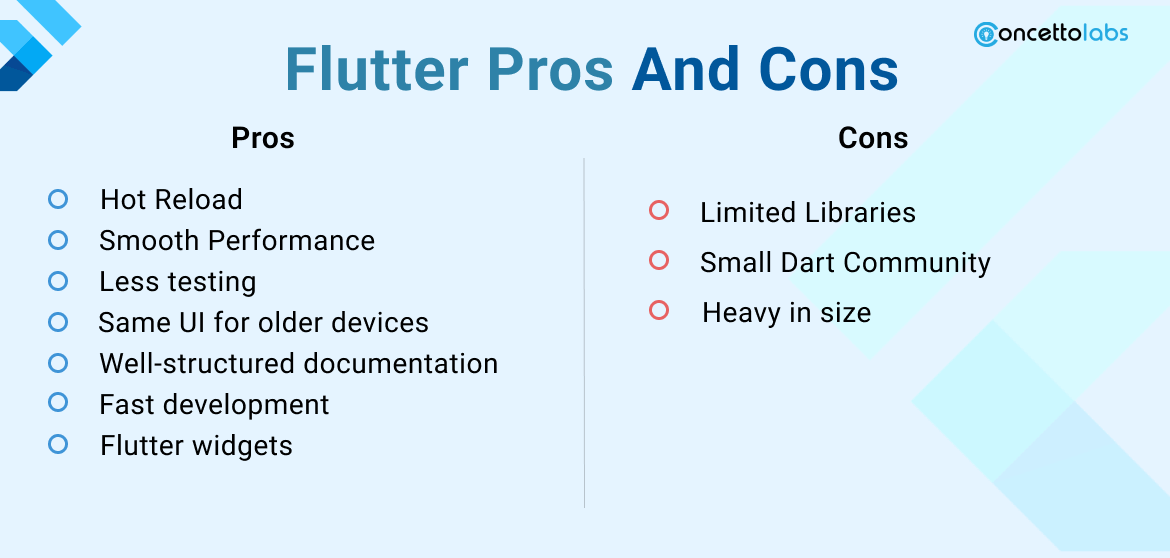
Pros
1. Hot Reload
Flutter streamlines the code update process with real-time capabilities and quick error fixing without full restarts.
2. Smooth Performance
Flutter gives a seamless performance of the apps hence resulting in great UX for the users.
3. Less testing
Flutter has fewer testing requirements, making it a more streamlined and efficient platform for app development. This reduces the time and resources needed for testing, allowing developers to focus on creating high-quality apps.
4. Same UI for older devices
With Flutter, you will get the same UI on all devices whether they are newer or older ones. This gives a consistent user experience for all users.
5. Well-structured documentation
Flutter’s exceptional documentation, with its simple structure and format, supports developers in creating apps.
6. Fast development
With built-in widgets for adding different UI, developers can create apps faster with reduced testing and hot reload providing quick issue fixing. It also provides quick MVP development and prototyping.
7. Flutter widgets
Flutter has great and customizable widgets. You can edit everything from colors, button, to text.
Cons
1. Limited Libraries
Being a recent framework, released in 2018, Flutter’s support for plugins and packages is limited compared to React Native.
2. Small Dart Community
Dart, used for Flutter, has a small dev community resulting in limited resources for learning, compared to the vast resources available for JS.
3. Heavy in size
Flutter’s reliance on built-in widgets results in a bloated app size, prolonged download time, and heightened storage requirements on smartphones.
Finding Top Flutter Developers For Your Cross-Platform App Idea? We have the right team for you!
Hire Flutter DevelopersWhat is React Native?
Facebook created React Native as its cross-platform developed framework. It is used by some of the top brands as use of JavaScript in ReactJS supports bigger applications and gives better performance. It is considered to be a powerful tool by developers and has increasing popularity with time.
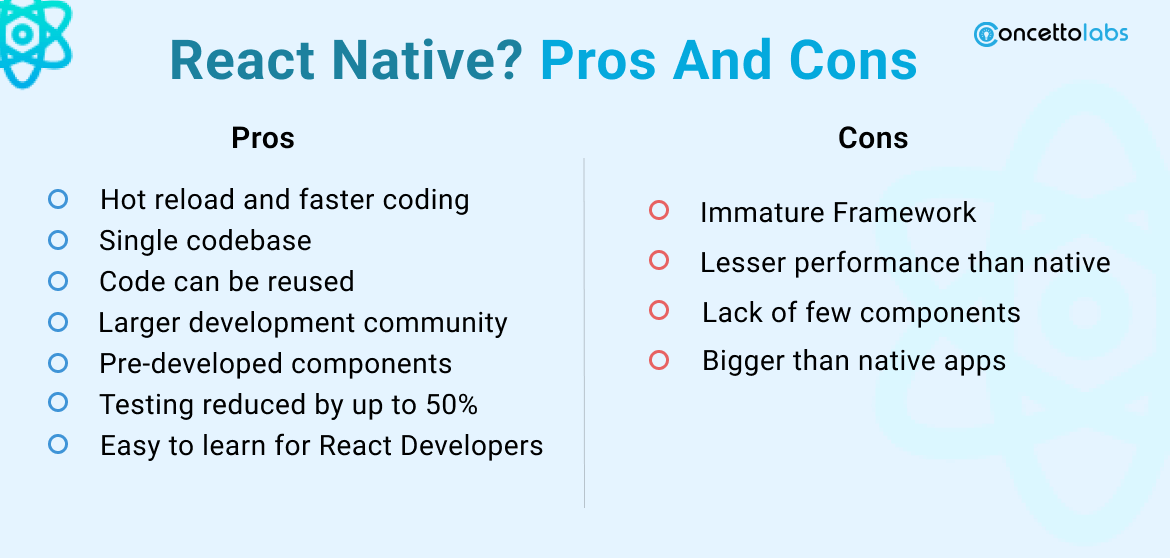
Pros
1. Hot reload and faster coding
With hot reloading, there is no necessity to restart the app every time the code is updated and hence, the coding speed can be increased.
2. Single codebase
React Native also gives cross-platform apps with a single codebase. Hence, developers do not need to write multiple codes for different platforms like iOS and Android.
3. Code can be reused
The code used for one platform can be easily used for any other platform. With reusable codes, time and cost are saved.
4. Larger development community
Since React Native is developed by Facebook, it has larger community support and one can easily find solutions for issues.
5. Pre-developed components
React Native has access to multiple open-source libraries where codes for a required component can be found easily, hence giving developers a bonus on development speed.
6. Testing reduced by up to 50%
A single testing code can be used for multiple platforms, hence saving the testing time for QA team.
7. Easy to learn for React Developers
When hiring a development team, it is beneficial to hire reactJS developers as they can easily learn React native because of their familiarity with React libraries and tools.
Cons
1. Immature Framework
With constant updates and changes in the framework, it becomes hard for the developers to catch up, making development tricky. Also, sometimes the framework becomes incompatible due to new advanced updates.
2. Lesser performance than native
As it is a cross-platform framework, it has limited functionalities than native and lower UX which results in lower performance than native applications.
3. Lack of few components
Though, there are a lot of pre-developed components available for the framework, sometimes, custom modules necessary to add cannot be found. Here, the developers need to write custom codes for the required components.
4. Bigger than native apps
React native works with JS code which is usually not needed in Android app development. However, with React Native JVM (Java Virtual Machine) needs to be added which increases the application size. In any case, React Native apps are bigger than native apps.
Looking for Expert React Native Developers For Your Next Project?
Hire Us!Usage Statistics
1. Flutter
- According to a 2021 survey, flutter dominates as the most used cross-platform framework by developers and 42% of developers preferred Flutter framework.
- Flutter is among the top 5 mobile app development frameworks
- 3.55% apps are developed with Flutter and 8.33% apps installed Flutter apps
- There are more than 90k apps developed with Flutter uploaded on Play Store
2. React Native
- According to a 2021 survey, React Native was just a little back from Flutter as it was preferred by 39% of developers
- React Native is used by more than 1700 companies all around the world
- In a survey of 60000 developers, React Native secured the 6th position with 14.51% coders voting for it.
Comparison of Flutter Vs React Native
Flutter |
React Native |
|
| Programming Language | Dart | JavaScript |
| Easy to learn for | C# or Java Developers | Front-end Java Developers |
| User Interface | Widget-Oriented | Native Components |
| Documentation | Well-structured | Unclear and Chaotic |
| Latest Version | Flutter 3.7 | React Native – 0.71.1 |
| Performance | Higher | Lower |
| Companies using | Google Ads, Alibaba, BMW, Philips, eBay | Instagram, Netflix, Amazon, Uber, Skype |
| Community Support | Smaller | Larger |
| IDEs (Integrated Development Environment) | Android Studio, IntelliJ IDEA, Visual Studio | Visual Studio, Atom, Nuclide, Sublime Text, Reactide and more |
| Code Maintenance | Easy to Maintain | Hard to Maintain |
| Development time | Lesser | Higher than Flutter |
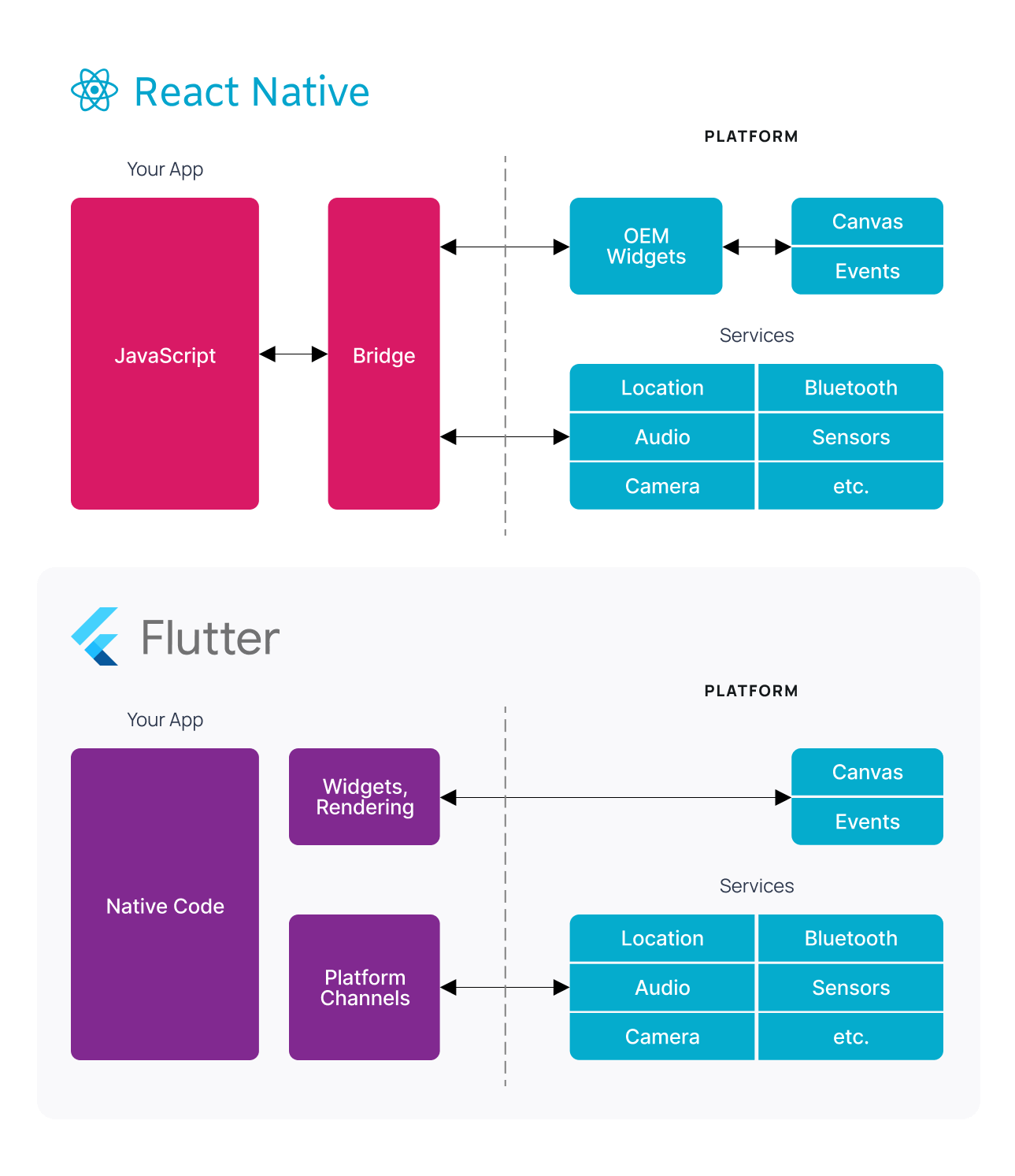
A Detailed Comparison of Flutter Vs React Native
1. Programming Language
Flutter uses Dart as its programming language. Dart was introduced by Google in 2011. Though Dart gives faster development than React Native, its syntax can be a bit tricky. Hence, there are less number of developers who know Dart which gives React Native a winning point,
React Native has a plus point since it uses JavaScript which is a popular language and is practiced by almost all developers. Also, learning JavaScript is preferred by developers since it is more in demand and has more resources to learn.
2. Architecture
With its combination of Skia and Dart, Flutter offers a smooth app development experience. Dart’s ahead-of-time compilation produces native code, making Flutter a more elegantly designed choice than React Native with no need for additional programming.
On the other hand, React Native uses Flux architecture provided by Facebook. However, to make cross-platform apps, Flux needs a JavaScript bridge for integration. This takes time and hence, makes the coding slower than Dart.
Still Difficult to make a Choice Between Flutter or React Native?
Consult our cross-platform development experts now!
Contact Us3. Installation
For Flutter, you need to install the binary for the platform you want to develop the app for. While with macOS, there is an additional step where an additional zip file has to be downloaded to add as a PATH variable. This makes Flutter’s installation speed slower.
Since Javascript is so much developed and old language, it is easier and faster to install, React Native framework with node package manager (NPM). However, the installation process is still lengthy for React Native. Thus, for installation, both frameworks are not a very good choice.
4. Development Time
Flutter has a weak side in case of development time. With Dart not being widely used by developers, Flutter is hard to learn or excel at. This results in higher development time.
While flutter gives limited resources comparatively, React Native uses JavaScript which is a prominent, clear, and simple language. It is also easy to find React Native developers. Hence, development time is reduced.
5. UI and Development API
Flutter has its own set of widgets to build various app components and these widgets are already in sync with Google Material Design and Apple’s Cupertino. This is one of the biggest advantages on Flutter’s side as the UI becomes more compatible with Google.
In the case of React Native, all the components are though pre-developed but are custom and used from third-party libraries. Hence, Flutter clearly dominates this point.
6. QA (Quality Assurance)
Flutter has its own quality-testing features integrated which saves time on Quality Assurance. There is no need to get third-party testing frameworks and it also gives a detailed guide for using their testing kit.
In comparison to React Native, frameworks like Jest and Detox have to be used for testing the apps. Though they are third-party resources, they do not hamper the performance of code that much. Thus in this point, both Flutter and React Native are almost equal.
7. DevOps Support
Again here, Javascript dominates. React Native having the JS, has a much larger DevOps community support. While Flutter has CI and CD’s official documentation. It provides detailed CI/CD documentation which has been proven to be easy to add to the apps. This surely helps and is going to be useful in the future.
React Native has a vast number of resources including third-party libraries, help documentation, and community support. Hence, currently, React Native wins the case here.
8. Performance
Since Javascript bridges slow down React Native apps, Flutter takes the reign for better performance. Flutter has an animation standard of 60 fps and also, and it can be directly compiled to its native ARM code. These points make Flutter’s performance better and faster. Though Flutter apps are larger in size, it helps you to reduce the size by proving help guides and documentation for it.
Now, though Flutter is good in performance, React Native is not so bad. JS bridges might slow it down but it still works well as it is used by most big companies. Hence, both frameworks compete here.
9. Release
In terms of release, Flutter has the upper hand since it enables easy deployment of new apps from the App Store or Google Play Store. It gives you a detailed guide for app deployment and has now CI support as well. Flutter apps can be released directly from the command line itself.
React Native has also a good deployment process but it needs manual deployment to be done. This requires third-party tools as well as lot of manual labor which makes it less attractive for release.
10. Documentation
Flutter wins in the game of documentation. The framework provides well-structured documentation and has in-detail guides for transferring apps from another framework to Flutter. There are beautiful 2D Graphics, Videos, and other resources for beautiful designs.
While React Native does have enough documentation and multiple courses to learn the framework. However, React Native releases frequent changes and doesn’t get time to update it all at once.
Future of Flutter and React Native
Flutter, being a relatively new framework, is expected to increase its market share and attract more developers due to its fast performance, ease of use, and flexibility. Additionally, with Google’s backing, Flutter is likely to receive regular updates and improvements, making it an even more attractive option for cross-platform app development.
React Native, on the other hand, is a mature and well-established framework that has been around for several years. It has a large and dedicated community of developers who are constantly contributing to its growth and improvement. React Native also has the advantage of being backed by Facebook, which is a major player in the tech industry.
Hence, both frameworks are estimated to grow by leaps and bounds in the future in their own specific domains as they come with their own set of advantages and disadvantages. It would be definitely hard to choose between React Native vs Flutter but there will be specific criteria to choose one.
Conclusion
How to choose between React Native and Flutter? Well, both framework has their own plus points that make them equally appealing for your next project. However, there are multiple factors that affect the decision of choosing one. This could be app size, codebase, functionalities needed, and more.
Some of the points you should keep in mind are, not to choose flutter when you need 3D in your app as Flutter doesn’t support it, or if the app needs more of native development. React Native should also be avoided in case the app is to be made for only one platform. Besides, it cannot handle heavy background processes like calculations or custom communication like Bluetooth.
To get the best out of these frameworks, you need an excellent team. You can hire flutter developers or react native developers directly or you can consult a top Flutter App development company or a React Native development company. Concetto Labs has just the right experience and resources for you. Contact us or Drop an inquiry at info@concettolabs.com.
Frequently Asked Questions
Here are some frequently asked questions about employing our developers that may help you.


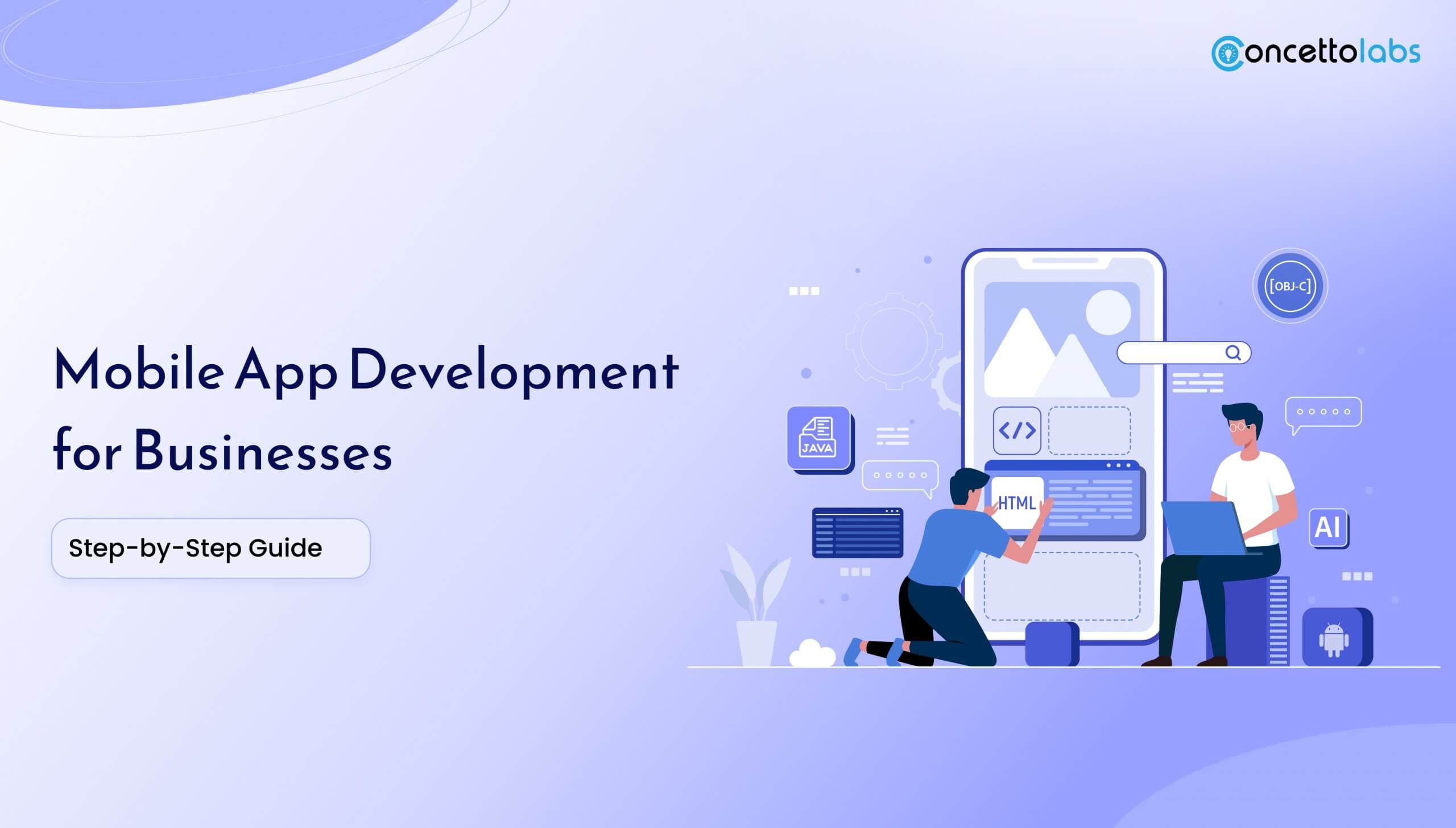
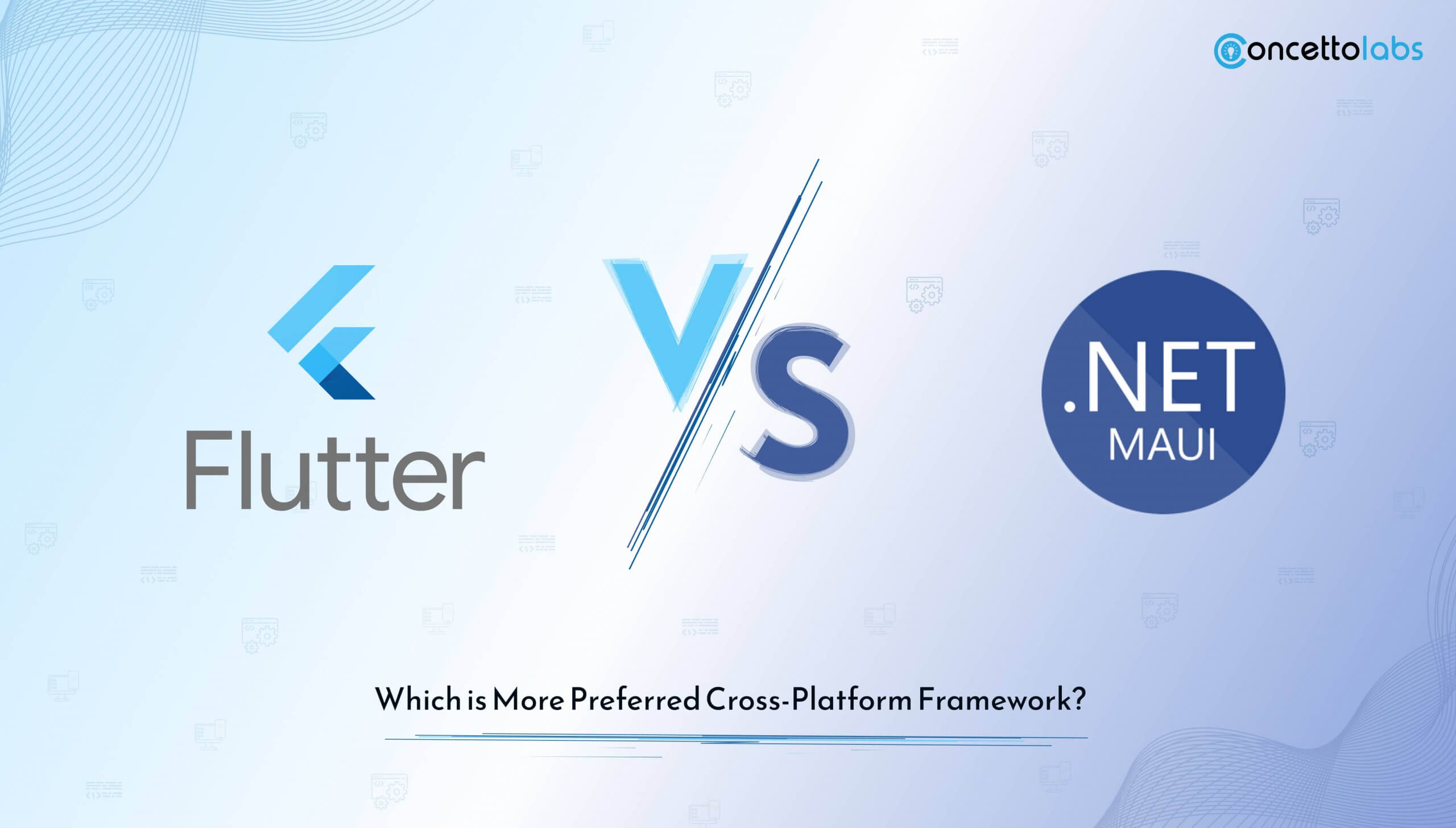





 Indonesia
Indonesia
 Botswana
Botswana
 USA
USA
 Italy
Italy
 Panama
Panama









 USA
USA UK
UK Saudi Arabia
Saudi Arabia Norway
Norway India
India Australia
Australia